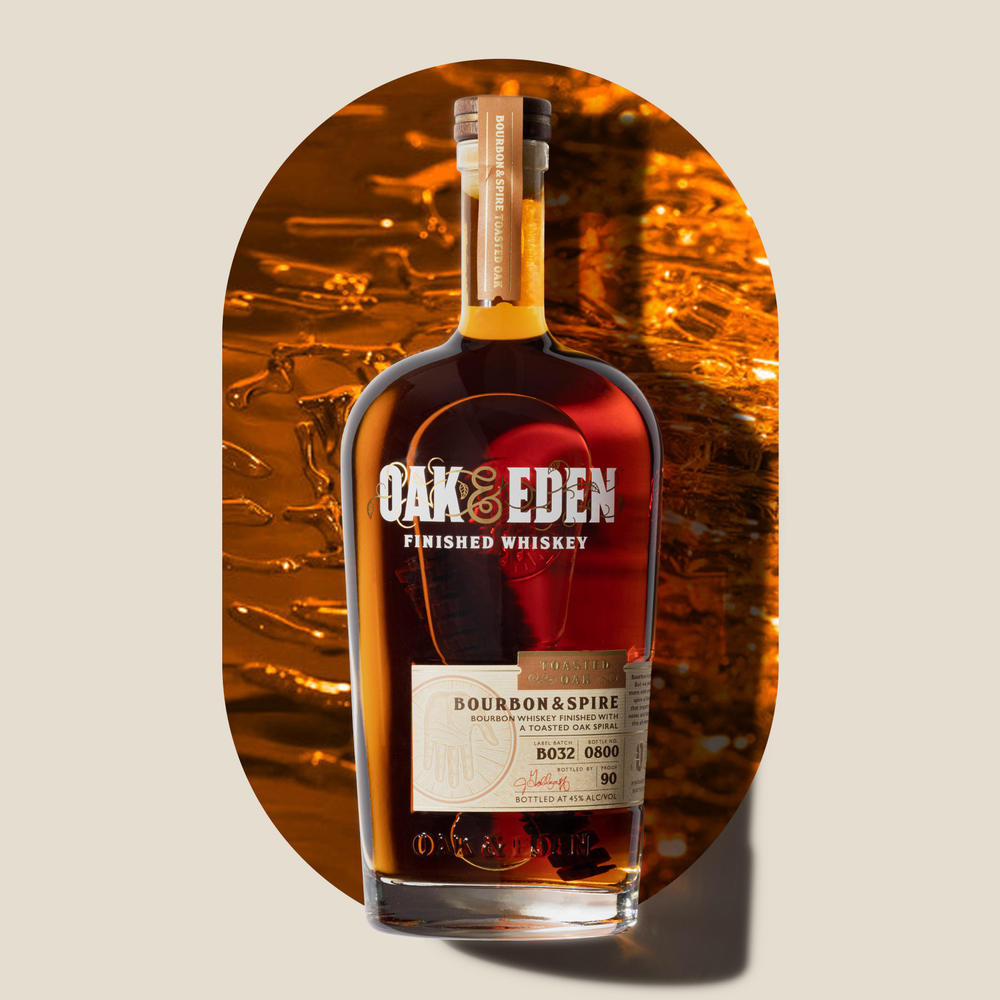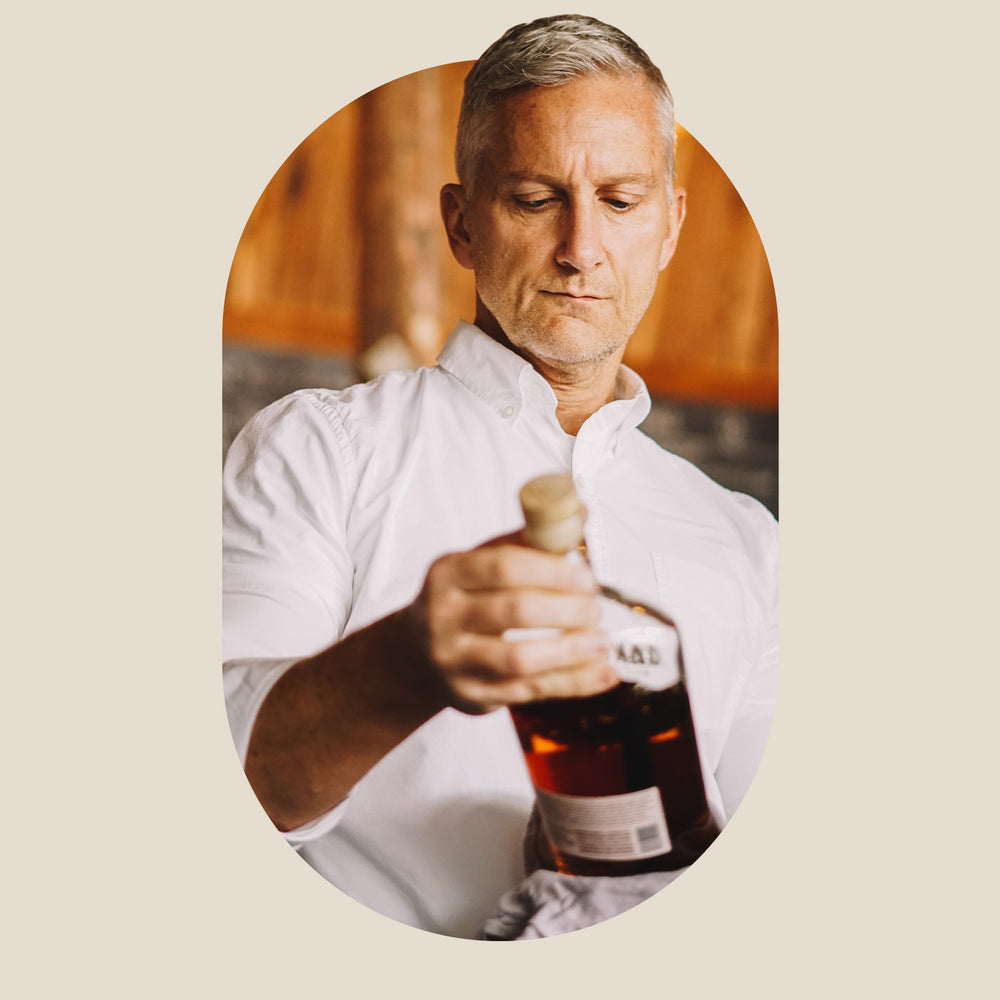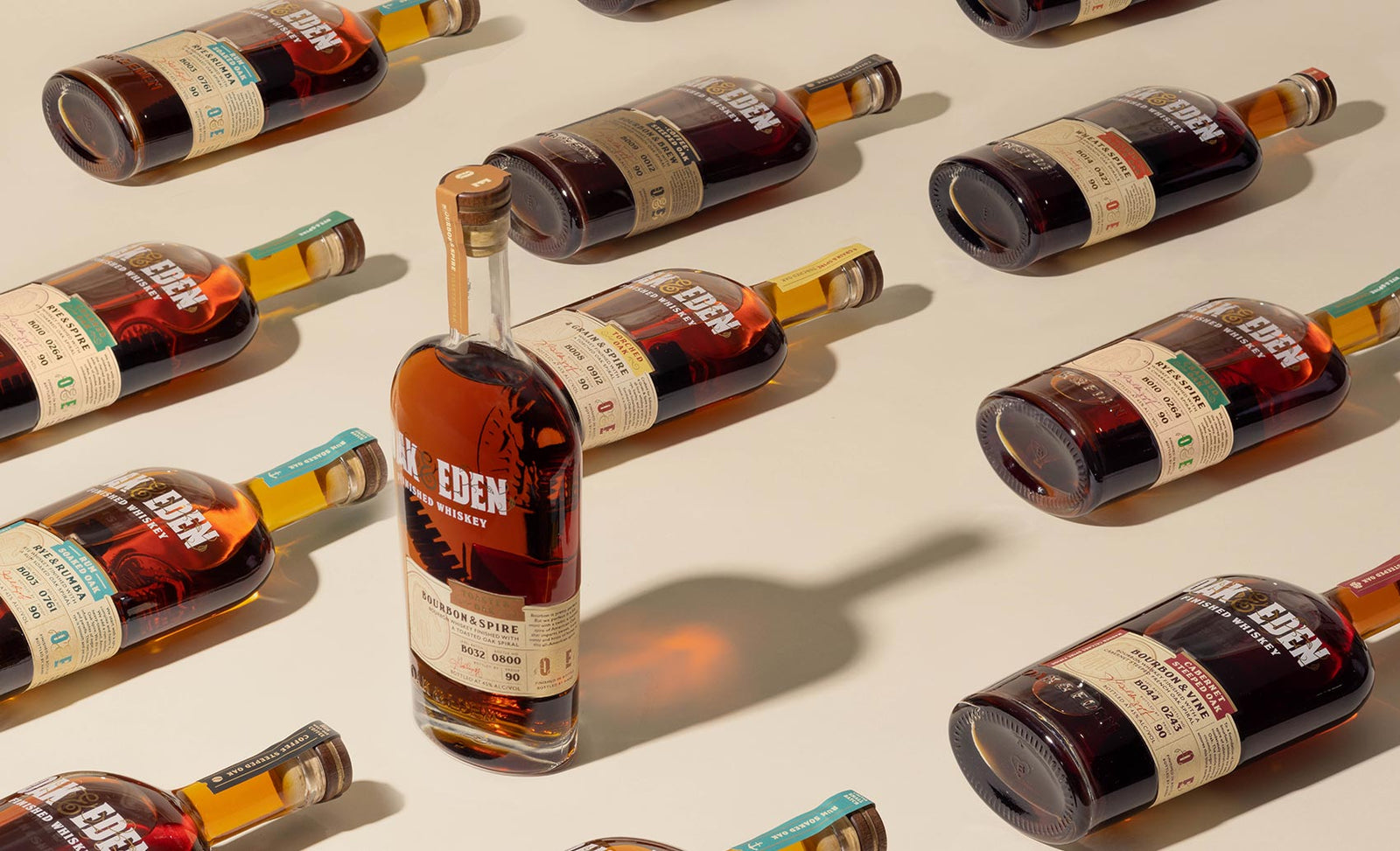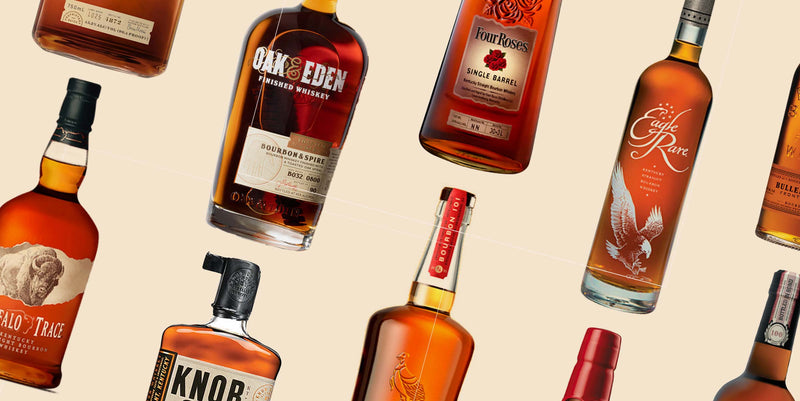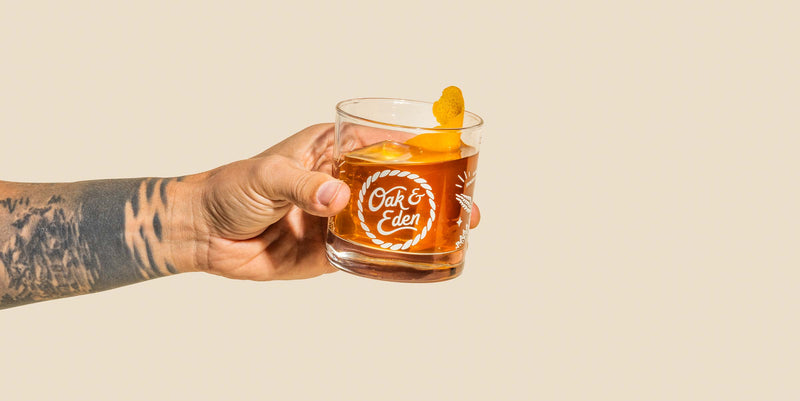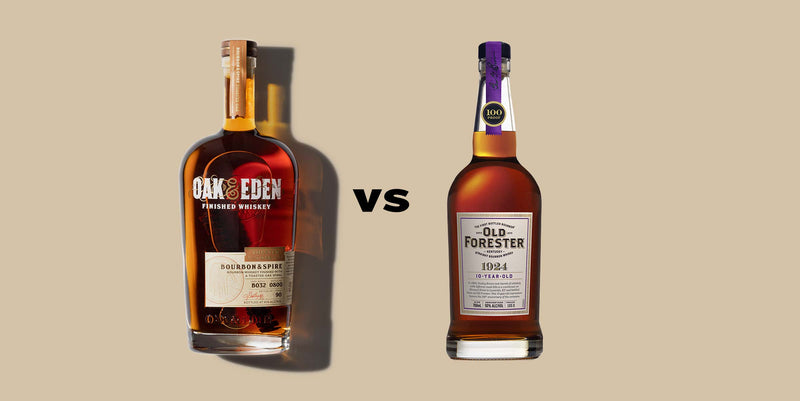What Is Bourbon?
Bourbon whiskey is an American whiskey that has been enjoyed for generations. Cowboys, musicians, and bargoers alike have all rallied behind this timeless smoky drink.
However, the truth is that we don’t know exactly where bourbon came from. The origin story of this distilled spirit, much like the drink itself, is shrouded in mystery.
Some purists believe the first barrel of bourbon whiskey was charred by a man named Elijah Craig, a reverend from Kentucky. Others speak of a man named Jacob Spears, another elusive figure allegedly from Bourbon County, Kentucky.
Whether you believe one man can really be credited with this phenomenon will probably always be up for debate. However, we believe that good bourbon transcends origins. This drink aligns with something deeper — something uniquely American. A collective cultural consciousness founded on rebellion and grit.
If you have ever felt the mystery of a blues or country song creep out of an old radio stereo, you probably thought to yourself, what inspired such a thing? Or perhaps you have watched a few old Westerns and wondered where these heroic outlaws and their opposing villains found their bravery. The answer lies somewhere in an old Southern Saloon at the bottom of an empty glass of the world’s best bourbon.
Now that we’re done waxing poetic about one of our favorite spirits, let’s get down to it. What is bourbon, and how is it made?
Criteria for Bourbon
If the idea of bourbon as part of a uniquely American identity seems a bit lofty, here are the concrete criteria for what makes bourbon. There are six different standards — and they’re actually legal requirements.
In order for us to twist things up, it was important that we start with the tradition of making real bourbon. Anything less would just be unacceptable.
Here’s what makes bourbon, well, bourbon.
Made in the USA
Bourbon needs to be distilled in the USA. Sure, some high-brow whiskey drinkers will try to convince you that bourbon must be made in Kentucky. However, in The Alcohol and Tobacco Tax and Trade Bureau’s Beverage Alcohol Manual, Kentucky is never once mentioned in the definition of bourbon.
Here at Oak & Eden, we distill our bourbon in Texas, and we think it’s still every bit as authentic as Kentucky bourbon.
Distilled to No More Than 80 percent
Bourbon whiskey must not exceed 80 percent alcohol by volume, otherwise known as 160 proof. If this is not adhered to, the whiskey runs the risk of becoming a natural grain spirit.
Bourbon increases in proof as it ages, so some distilleries will barrel their whiskey at a lower proof to stay below the maximum 125 proof.
A Mash Bill Including Corn
A whiskey's mash bill refers to the grains used to make the spirit. Bourbon whiskey must be made from a fermented mash of no less than 51% corn. Some consider this the most important step of bourbon production, most likely because we naturally associate bourbon with corn.
However, bourbon mash bills can also contain hints of other grains like rye or wheat to help aid in fermentation. The corn helps give bourbon a sweeter, more robust flavor profile, often with hints of vanilla and even syrup.
The Aging Process
This type of American whiskey must be stored in charred oak containers, often casks or barrels.
In a process known as charring, the bourbon barrels or containers are burned before storing whiskey. The extent to which the barrel is charred will impact the whiskey's flavor profile.
The charring can often be broken down into the four most common levels. Level one refers to a barrel with less char, leaving more of a natural wood taste. In level one, the wood is burned for 15 seconds. Level four introduces drinkers to a deeper colored bourbon with hints of vanilla and caramel. By level four, the wood is burned for nearly a minute. Level two and level three sit between these two categories with chars of 30 seconds and 35 seconds, respectively.
Then comes the aging. Young bourbon (aka younger than four years) must be labeled with an age statement to differentiate it from its older counterpart. Straight bourbon whiskey is aged for at least two years, while bottled-in-bond bourbon is aged for at least four years. In general, the longer a bourbon is aged, the deeper and more complex the flavor — and the more expensive the bottle.
At Oak & Eden, we are letting you decide how charred you would like your bourbon, as well as how long you’d like to let it finish in the bottle.
Bottled Proof
The whiskey must be bottled at an alcohol content of no less than 40% alcohol by volume (80 proof).
Where Does Bourbon’s Flavor Come From?
But how exactly does this dark liquor get its signature bite? These steps in the process of distilling and aging whiskey are essential to the deep, complex flavors you love so much in your bourbon.
Treating the Malt
Before the whiskey is fermented, many distilleries will take the time to treat the malt blend to balance the batch. In Scotch, for example, the malt is often treated with smoked peat moss, giving the drink its characteristic peaty flavor. This comes in contrast to the smokiness of bourbon, which is developed during the barreling process.
Fermentation
The fermentation process is where many of the flavors that will be in the final pour are introduced. However, fermentation introduces a more subtle blend of tastes. This is where all the grains (mash bill) come together to create a complex flavor profile unique to each drink. The fermentation process, for example, is why rye tastes so spicy.
Aging Process
If you were to make whiskey without aging it in the barrel, you would not have whiskey. Instead, you would be drinking some variation of moonshine. The wood is what gives the whiskey its flavor.
Bourbon is famous for containing phenolic compounds from aging in the charred oak barrel. These compounds are rich in flavor and essential for the maturity of a decent bourbon whiskey. Aging the bourbon in the barrel gives it the dark and sensuous taste we know and love.
Additional Flavoring
In some instances, certain whiskeys can be enhanced with artificial sweeteners and flavors during the barrelling process. Some Canadian whiskeys are famous for added caramel flavoring.
However, here at Oak & Eden, we let the spirit speak for itself.
How To Sample Bourbon
Whatever way you choose to enjoy your bourbon, knowing the best way to sip and savor it will help you along the way. The more you drink bourbon, the more appreciation and knowledge you will gain for this complex spirit. Like anything, experience is key.
However, beginners can try these helpful tips to gain a deeper understanding of our favorite mysterious dark drink.
Take Note of the Smell
A lot of what you taste comes from what you smell. Take a good whiff of the bourbon before you take a sip. Just breathe normally about an inch away from the brim and notice what you’re smelling.
You might notice hints of cedar, pine, smoke, caramel, toasted vanilla, and more.
Analyze the Color
If you look at a few bottles of bourbon lined up, you’ll begin to see the nuisances in the color of the liquid. For example, a level three charred new oak barrel will give the bourbon a less dark look compared to a level one char.
Take time comparing different chars and see how they impact the color and taste of the bourbon.
Enjoy the Sip
After smelling and seeing, it is time to sip. Don’t chug the entire glass in one go. Take one sip and roll the whiskey over your tongue to absorb all the flavors the bourbon has to offer.
Similar to the aroma, you might notice sweeter notes of caramel and vanilla, as well as woodsy, smoky flavors.
How To Drink Bourbon
How you choose to enjoy bourbon is entirely up to you! However, these are a few of our favorite ways to drink it. Of course, there is no wrong way to drink bourbon — but, in our humble opinion, if you are going to drink bourbon, drink bourbon in a way that helps enhance the flavor profile, not diminish it.
Try It Straight, aka Neat
There’s nothing wrong with mixing up classic cocktails with your bourbon, but there’s truly nothing like sampling it straight. How else are you going to be able to analyze all the flavor notes in your bottle?
Making bourbon is an artform — a process that produces a drink full of subtlety. Too many mixers can muddle those complex flavors and cause you to lose out on a wonderful experience.
So, if you’re out and about and looking to sample some straight bourbon, make sure to order it “neat.”
On the Rocks
On the rocks is one of those terms you probably heard the first time you walked into a bar. It’s another iconic method of sampling quality spirits. On the rocks means that you’re getting bourbon with a bit of ice mixed in.
The chilled quality of bourbon on the rocks adds a new layer to the drink that some people love and some people hate. The main downside to bourbon on the rocks is that you run the risk of diluting the alcohol and thus the flavor profile with the water from the melted ice.
To help prevent dilution, your whiskey on the rocks might be served with one large piece of ice as opposed to smaller cubes. A larger piece of ice will dilute your drink more slowly, giving you time to sip and savor.
Bourbon and Water
In some cases, you may prefer the diluted taste of a bourbon mixed with water but dislike the chill of bourbon on the rocks. If this sounds like you, try asking for bourbon with a dash of water at the bar. If you are pouring the drink yourself, fill the cap of a water bottle with water and dash it into the bourbon.
Some people report that a small amount of water in their whiskey helps enhance all the flavors the spirit has to offer.
Famous Cocktails With Bourbon
If drinking bourbon neat or straight seems like a daunting task, try drinking bourbon in a cocktail. This whiskey is a great addition to many drinks at the bar (or at home, if you’re looking to try your hand at mixology). With the right ingredients, you can experiment with making the perfect bourbon-infused cocktail for you and your guests!
Manhattan
This iconic cocktail is often made with rye whiskey, but we think bourbon is an even better choice. The combination of whiskey, sweet vermouth, and bitters is a classic for a reason.
Old Fashioned
Perhaps the most well-known whiskey cocktail, the old fashioned is only improved by the inclusion of bourbon. Muddle sugar, bitters, and water, add your bourbon, and then garnish with a cocktail cherry. It doesn’t get much better.
Mint Julep
If you’re heading to the race track, you’re sure to see a few mint juleps along the way. Comprised of bourbon, sugar, mint, want, and — of course — crushed ice, this refreshing cocktail is perfect for a hot summer day.
Bourbon Apple Cider
Perfect for a crisp autumn evening or wintery afternoon, a bourbon apple cider cocktail is a must-try! This mix of bourbon, apple cider, and spices will keep you warm and cozy, even if you don’t have the luxury of enjoying it in front of a fire.
Bourbon Sour
A bourbon-style whiskey sour is a delicious drink for beginner whiskey drinkers and old hats alike. The simple ingredients make it easy to recreate at home and help to lighten the robust flavor profile of most bourbons. This cocktail is made with orange peel, lemon juice, and sugar.
Boulevardier Cocktail
If you are looking for something a little classier for an upcoming dinner party, you have to try this bold and flavorful bourbon-inspired recipe. All you need is angostura bitters, simple syrup, and a large single ice cube to help minimize watering down the whiskey.
What About Cooking With Bourbon?
It would be foolish to write a complete guide on bourbon without mentioning its power in the kitchen.
This smoky drink adds flavor and depth to a variety of baked goods and dishes. Try a bourbon glaze on the grill, or add bourbon to a pecan pie. This brown liquid can help enhance various foods, from chocolate to salmon, so get experimenting. Just make sure to serve your finished dish with a glass of bourbon on the side.
Twisted Tradition
Here at Oak & Eden, we have taken America’s native spirit and adjusted it so you can enjoy a drink steeped in tradition with a twist. We believe that the glory of whiskey comes from the barrel and, more specifically, the wood. Before it enters the barrel, it is flavorless — just another liquid. After exposure to the wood, bourbon is made.
After the first barrel, other bourbon manufacturers place their whiskey in a second barrel for finishing. We wanted to let you, the drinker, finish the process, so after our bourbon hangs out in the American White Oak barrels for the first two years, we leave the process to you.
Inside each bottle of Oak & Eden Bourbon is a spiral-cut piece of wood called a spire. The level of fire that the spire is exposed to can vary — it can be toasted lightly or go to a full degree of char for a rich, smoky flavor. Additionally, we might infuse that piece of wood with another libation — Cabernet, rum, beer, you name it. The tradition of bourbon is now in your hands.
Other Whiskey Types
While many of us enjoy bourbon for its smoky, smooth taste, there are many other whiskeys to consider when visiting the bar or your local liquor store. Here’s what you need to know about other types of whiskey.
Irish Whiskey
Irish whiskey is among the most popular whiskeys in the world. In fact, during the whiskey boom of 1890, 28 distilleries were making Irish Whiskey in Ireland.
It is famous for its characteristically smooth finish as opposed to the earthy flavor profile of Scottish whiskey. While bourbon is mostly distilled from corn, Irish whiskey is made with primarily barley, both malted and unmalted.
Scotch Whiskey
Scotch whiskey must be produced in Scotland to earn the designation, among other regulations. This popular historic beverage can be broken down into five categories.
- Single malt whiskey: This category of Scotch whiskey must be composed of a mash bill of malted barley and is distilled at a single distiller.
- Single grain whiskey: Similar to the single malt whiskey, this variation can include whole grains and unmalted cereals in addition to the water and malted barley mixture.
- Blended whiskey: This variety includes one or more single grain Scotch whiskies with one or more single malt Scotch whiskies.
- Blended malt whiskey: This is a blend of at least two different single malt Scotches from two different distilleries.
- Blended grain whiskey: This is a variation of at least two single grain Scotches produced in different distilleries.
Canadian Whiskey
Canadian whiskey is a blend of different types of grain. They are quite similar to bourbon in that the mash bill tends to include a majority of corn, producing a light whiskey.
Japanese Whiskey
Japanese whiskey has a reputation for being high quality but for a price. It is most often compared to the complex flavor profile of Scotch whiskey.
Tennesse Whiskey
Tennessee whiskey refers to another variety of whiskeys that must be made in America, specifically in Tennessee.
Like bourbon, Tennessee whiskey must contain at least 51 percent corn, and it ages in new charred oak barrels. However, Tennessee whiskey must be charcoal filtered.
Taste Bourbon for Yourself
While Bourbon Whiskey is an American whiskey through and through, each bottle has its own personality. Far more than just a brown liquid in a jar, bourbon whiskey is a relic of the past and a perfect reminder of the finer things life has to offer.
If you are ready to customize the traditional and explore the wonderful flavor of bourbon, check out Oak & Eden Bourbon and taste it for yourself.
Sources:
The Bourbon Myth | The New Yorker
Definitive Guide to Different Types of Whiskey | Gentleman Ranters
13 Easy Bourbon Cocktails | The Kitchen Community
Bourbon doesn't have to be made in Kentucky. Here's why | Courier Journal

